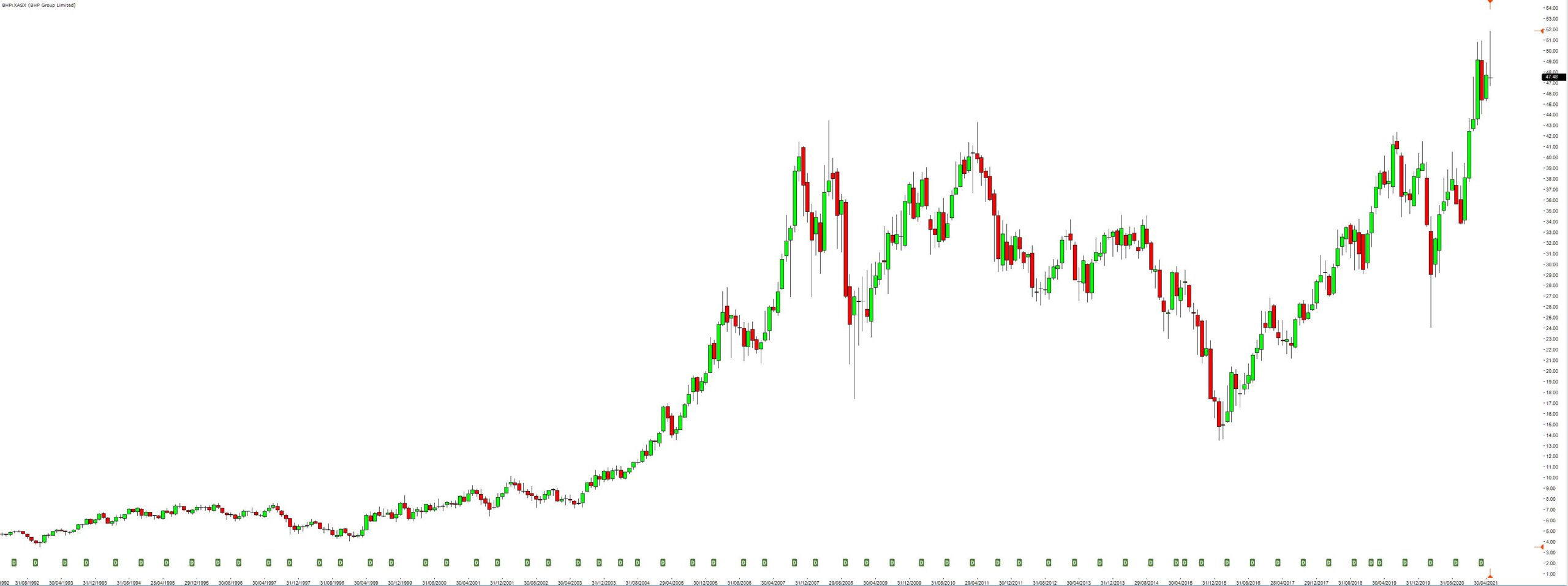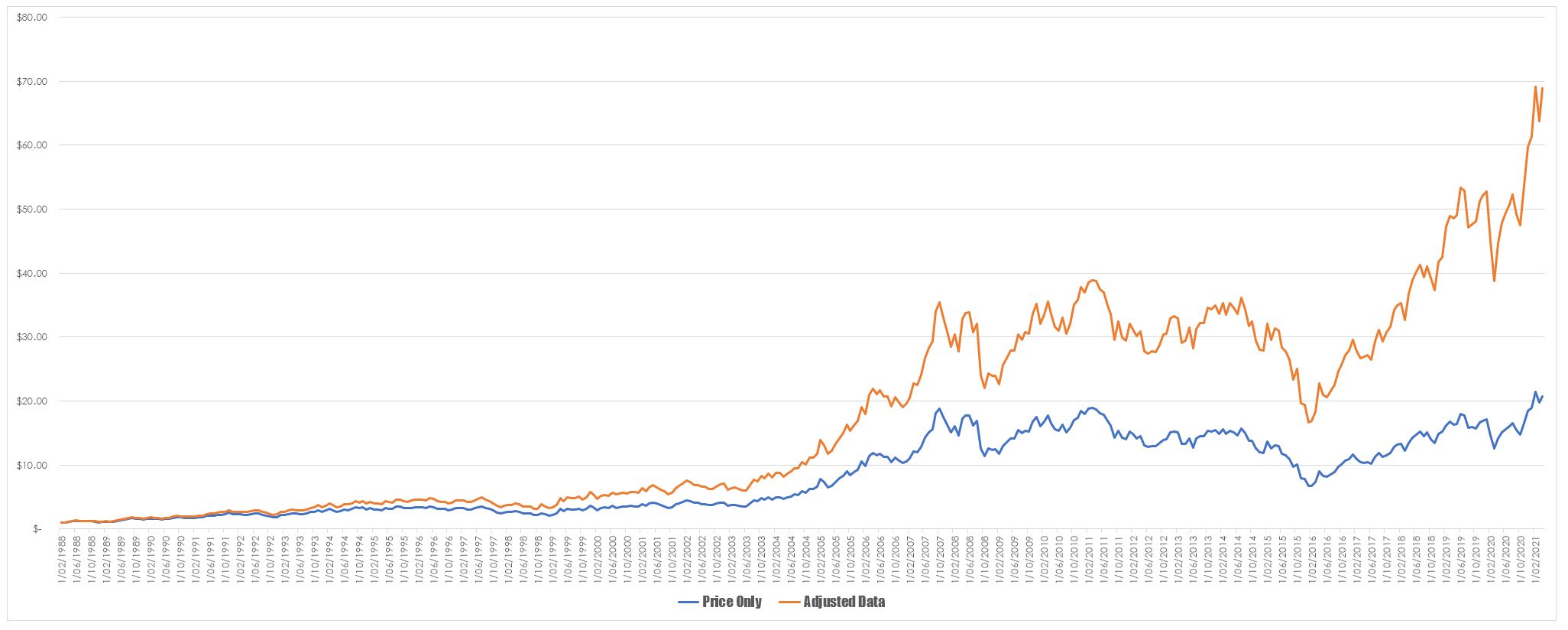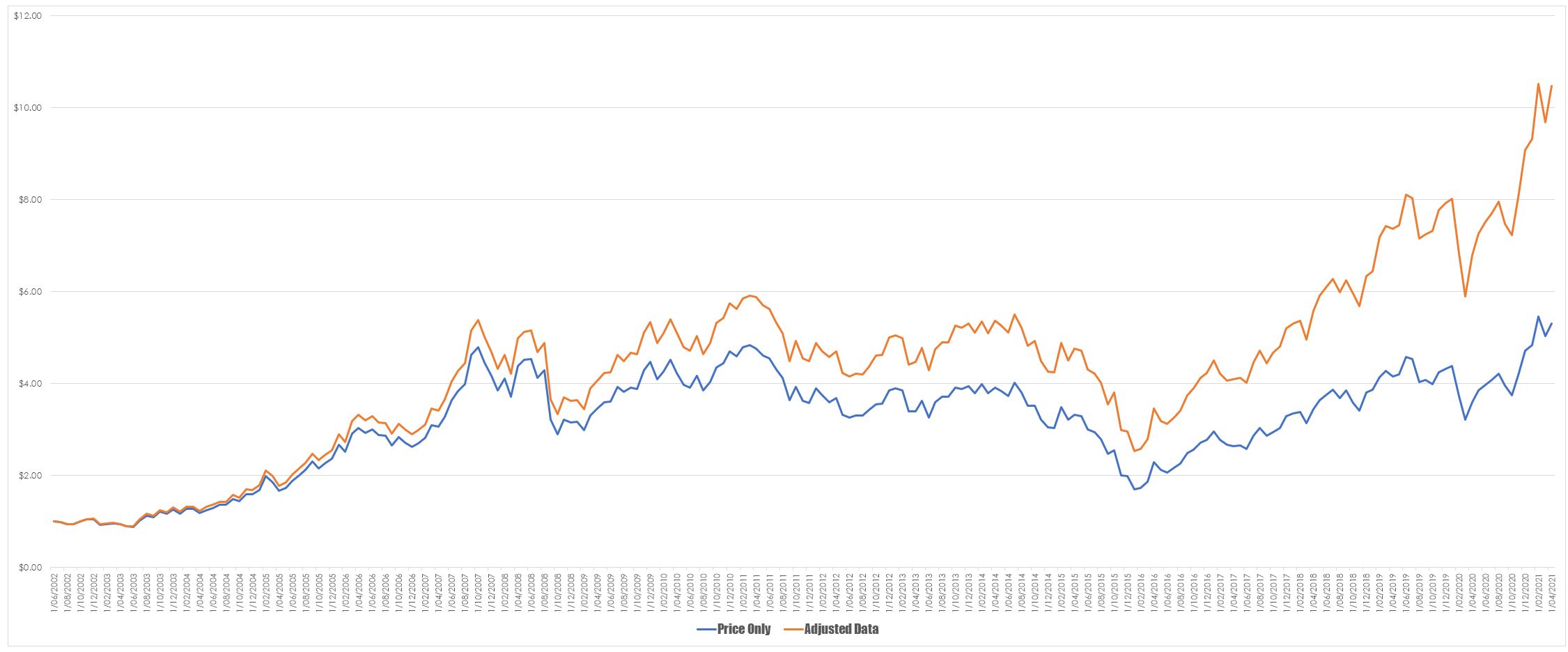This piece from the lads at MF&Co Asset Management dropped into my inbox this morning. What caught my eye was the notion that BHP was a high dividend yield play kind of stock. To be honest I had never thought of it that way and had only ever traded BHP via ETO’s and with the downturn in the local options market, I hadn’t done that for years. As such it was time for a bit of investigation because I have nothing else to do as we are lockdown yet again because incompetence among politicians is a prerequisite in Australia but that’s a different story entirely.
The starting point for this is naturally to get a sense of the dividend history of BHP – I wasn’t interested in the amount at this stage but rather what the pattern of payment was. And as can be seen below BHP has been remarkably regular over its history.

The next thing to look at was some of the metrics surrounding the dividend. The three charts below are from Macrotrends and it shows the share price, dividend payout, and dividend yield. To my eye, the thing that stands out is that the dividend drops sharply in 2016 and recovers through 2018/19. At this point, the dividend payout increases sharply. The beginning of 2019 sees a special distribution of $1.41 paid to shareholders. which helps pump up the yield for 2019 to about 10.5%.
The question is what value is this to shareholders. The easiest and bluntest way to ascertain this is to compare straight price with price that has been adjusted for dividends – this is shown below.

As expected there is a substantial difference in price only and price adjusted for dividends. This is to be expected as the dividends are folded back into the returns. However, there is a caveat in this data and that is that it is also adjusted for splits. In the period in question, there were four splits that we have to be cognisant of. In order, to check what influence if any they had we can take a segment of data when there were no splits and examine the relationship during that period.
 As can be seen, the relationship holds true in lieu of splits or other corporate action. The reason this difference occurs is simply a matter of compounding and can best be visualised by referencing a simple model of compounding. The chart below shows two investment schemes one returning 10% pa and the other 12.5% pa – to mimic dividends I have compounded this twice yearly. It is natural over time that the differential between the two accounts will expand as the impact of compounding is felt.
As can be seen, the relationship holds true in lieu of splits or other corporate action. The reason this difference occurs is simply a matter of compounding and can best be visualised by referencing a simple model of compounding. The chart below shows two investment schemes one returning 10% pa and the other 12.5% pa – to mimic dividends I have compounded this twice yearly. It is natural over time that the differential between the two accounts will expand as the impact of compounding is felt.
 .
.
Dividend reinvestment is a form of compounding and it is natural that it will outperform price only as an investment tool. This does raise the question as to the utility of this for traders and this depends upon your definition of trader. Unfortunately, the current definition seems to imply someone who has the attention span of a gnat and simply churns stocks for the fun of it. However, a trader can also be someone who holds long term trends for many years and if you fall into this category then dividends are extremely valuable.





